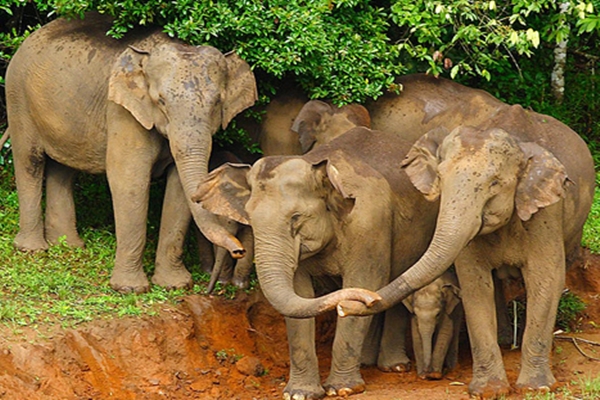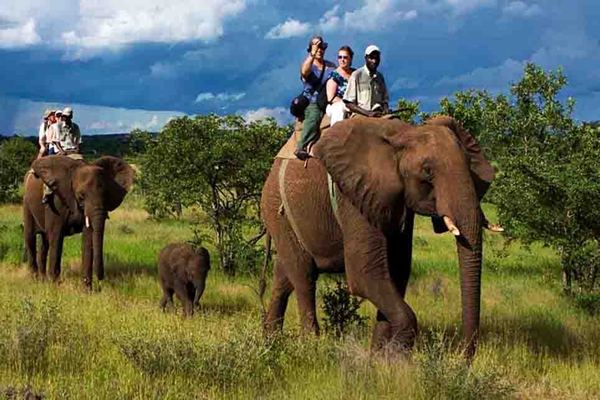
India is an incredible land with a rich and diverse wildlife. Did you know that 4% of India’s land is under forests? There are about 515 wildlife sanctuaries in India which are home to 1180 different species of birds, 350 species of mammals, 30000 different kinds of insects and more than 15000 varieties of plants. Phew! You will be simply mesmerized by the natural beauty at wildlife sanctuaries.
Let's take a look at top 10 National Parks in India that you must visit once:
1. Kaziranga National Park, Assam
The amazing world of the north-east! It boasts of being a world natural heritage site as declared by UNESCO. Spread over 858 sq. Km around the Brahmaputra River, this magical sanctuary, is most famous for the endangered One-horned Rhino. 2/3rd of the world’s population of these Rhinos lives in this forest. This is also the abode of 60% of the India’s wild buffalo population. Characterised by vast stretches of savannah grasslands, wetlands and chars of river islands formed by the shifting course of the river, you can find a sizeable population of birds here. Though you have a jeep safari which takes you around, we recommend that you explore this wonder via an elephant safari. It would be a priceless memory to view the rhinos grazing with the buffaloes and deer while you enjoy the ride treading through the tall grass.
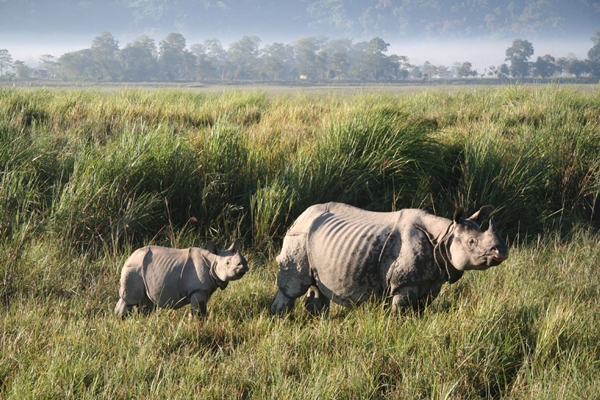
2. Sunderbans National Park, West Bengal
The Sunderbans Tiger Reserve is the showpiece attraction of coastal West Bengal. Although an encounter with the famed Royal Bengal tiger is not guaranteed, a boat cruise on the muddy rivulets meandering through dense mangrove forests is sure to thrill you to no end. Home to one of the largest concentrations of royal Bengal tigers on the planet, the Sunderbans Tiger Reserve is a network of water channels and semi-submerged mangrove forests that collectively form the world’s largest river delta. Tigers (officially estimated to number close to 300) lurk in the impenetrable depths of the mangrove forests, and also swim the delta’s rivulets. Although they sometimes kill villagers and their cattle, tigers here are typically very shy and sightings are thus rare. Nevertheless, cruising the waterways through the world’s biggest mangrove sanctuary (now a Unesco World Heritage Site) and watching wildlife – whether it be a spotted deer, a 2m-long water monitor of a luminescent kingfisher – is a world away from your usual urban chaos.

3. Bandhavgarh National Park, Madhya Pradesh
The famous white tigers of Rewa were discovered in this forest and Bandhavgarh is considered to be the home of these tigers. However, no white tigers have been spotted since 50 years here. This forest is spread over 105 sq. kms on the Vindhya Hills in Madhya Pradesh. It boasts of having highest density of the royal Bengal tiger population in the country. Apart from the tigers you can get spectacular views of other majestic creatures like Nilgai, Chital, Chinkara, Wild Boar, Chausingha and more. With 250 species of birds and 22 different species of mammals, this national park has a lot to offer for nature lovers.
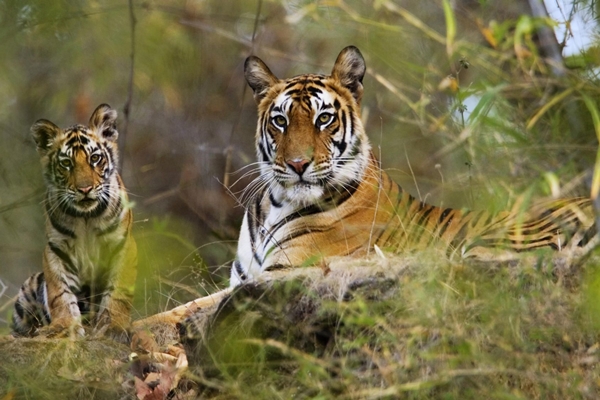
4. Jim Corbett National Park, Uttarakhand
Striped tigers majestically roam an expansive savannah, moody elephants double as unexpected roadblocks, gharial crocs bask on the banks of limpid green rivulets, and hundreds of eyes spy on you from the primal depths of an evergreen forest. Established in 1936 as India’s first national park, Corbett takes its name from the legendary tiger hunter Jim Corbett (1875–1955), who put Kumaon (the district in which the forest lies) on the map with his celebrated book The Maneaters of Kumaon. Covering an area of more than 1300 sq km, this terai wildland is home to nearly 200 tigers, about 300 wild elephants, sloth bears, langur monkeys, rhesus macaques, peacocks, otters, gharials and several species of deer among other animals. The varied landscape of the park – ranging from dense vegetation to rolling grasslands – is an added draw.
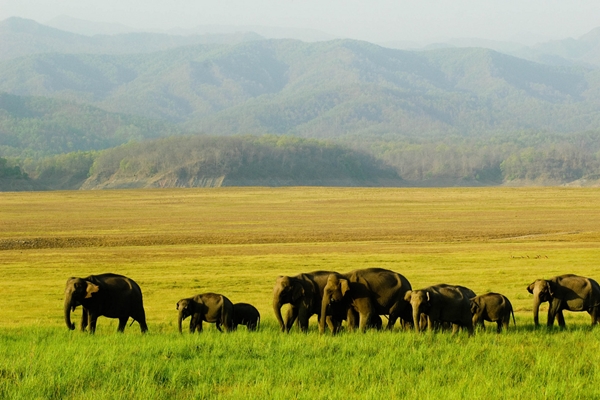
5. Ranthambore National Park, Rajasthan
Comprising 1334 sq km of wild jungle scrub hemmed in by rocky ridges, this famous park, open from October to June, is the best place to spot wild tigers in Rajasthan. At its centre is the amazing 10th-century Ranthambhore Fort, scattered around which are a number of ancient temples and mosques, hunting pavilions, crocodile-filled lakes and vine covered chhatris. The most famous resident of the park is of course the tiger. However, getting an accurate figure on the number of tigers comes down to who you believe – the park probably has around 32 tigers. Spotting one is a matter of luck; you should plan on two or three safaris to improve your chances. The only way to travel into the core of the national park is by going on the safari. These safaris are usually done in open-top canters and Gypsys. But remember there’s plenty of other wildlife to see including more than 300 species of birds.
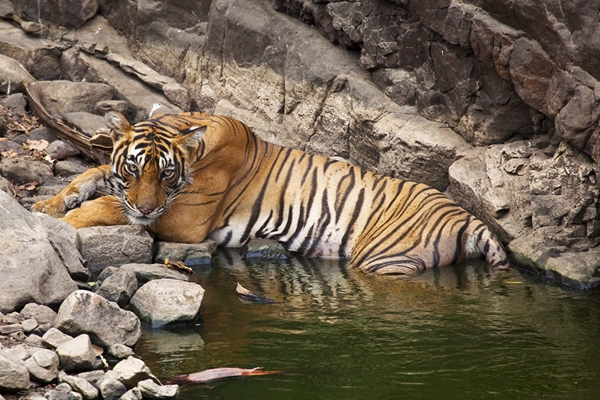
6. Kanha National Park, Madhya Pradesh
Kanha National Park is one of the most sought after National Parks in India. Centrally located in the state of Madhya Pradesh, Kanha is famous as a Tiger Reserve among the wildlife enthusiasts. Kanha is divided into two wildlife sanctuaries namely Hallon and Banjar, of 250 and 300 sq. km respectively. The park is densely populated with Bengal tiger, Barasingha, Indian leopards, the sloth bear, and Indian wild dog. It also houses swamp deer, which is a subspecies of the Great Swamp Deer of Sundarbans and is found nowhere else except Sundarbans. Kanha also nestles more 1000 species of exotic flowers that are one of its kind. This wildlife sojourn is one of the most favourite among the tourists who flock this park to get a glimpse of the wildlife in its real allure.
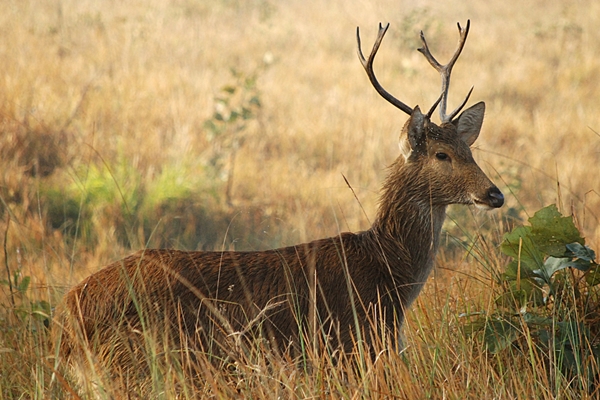
7. Bandipur National Park, Karnataka
Bandipur National Park, is located in Karnataka, which is easily accessible from Mysore, Bangalore and Ooty. Once upon a time, this wildlife sanctuary was used as the private ground for hunting by the Maharajas of Mysore. Spread across 874 sq. km, Bandipur National Park is surrounded with Mudumalai Wildlife Sanctuary in Tamil Nadu, Wayanad Wildlife Sanctuary in Kerala and Nagarhole National Park. This park houses elephants, spotted deer, gaurs (bison), antelopes and numerous other native species. The lush greenery is particularly mesmerizing after the onset of the monsoon, however, October to May remain the best time to visit. Explore this wildlife sanctuary in an early morning jeep safari, and you will be treated with some magnificent sights to remember.
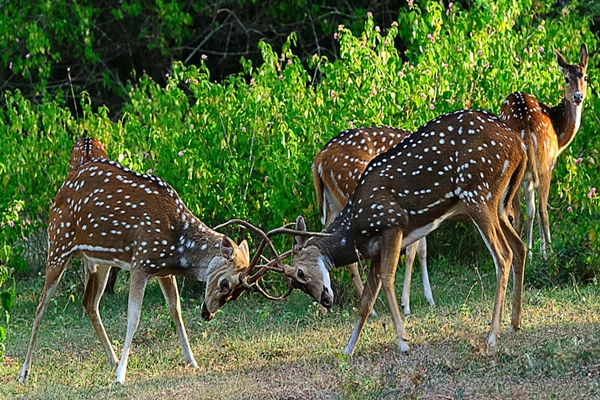
8. Mudumalai National Park, Tamil Nadu
In the foothills of the Nilgiri Mountains in Tamil Nadu, this 321sq km forest reserve is like a classical South Indian landscape painting brought to life – thin, spindly trees and light-slotted leaves concealing spotted chital deer and grunting wild boar. The showcase species in Mudumalai is the striped royal Bengal tiger. There are around 50 tigers lurking in these jungles – giving Mudumalai the highest tiger density anywhere in the country. However, as in any other nature reserve, you will have to be extremely lucky to actually spot one. Overall, though, the reserve is the best place to spot wildlife in Tamil Nadu. The creatures you are most likely to see are deer, peacocks, wild boar, langurs and giant Malabar squirrels. There’s also a significant chance of sighting wild elephants (the park has several hundred) and gaur or the Indian bison.

9. Dudhwa National Park, Uttar Pradesh
Easily spotted is the one horned rhinoceros, reintroduced into Dudhwa National Park following its complete disappearance from these areas. This is also where hordes of handsome barasinghas (swamp deer), the state animal, play hide-and-seek amidst magnificent swathes of grassland. The 680sq km Dudhwa National Park is located 75km north of Lakhimpur. The park itself is barely 10km from its closest township Palia Kalan – also the stretch along which the very limited accommodation options are located – and about 25km to Gaurifanta on the Indo-Nepal border. The best way to access its wildlife is through twice-daily safaris offered by the Forest Department. The elephant safari, conducted only early mornings, lasts up to an hour and is limited to the rhinoceros enclosure at Salukhapur. The jeep safari, which takes up to three hours, can be enjoyed both early morning and late afternoon. A Gypsy is everyone’s vehicle of choice to negotiate the terrain inside the park and can be hired locally. You’ll do well to book ahead as there are a limited number available.
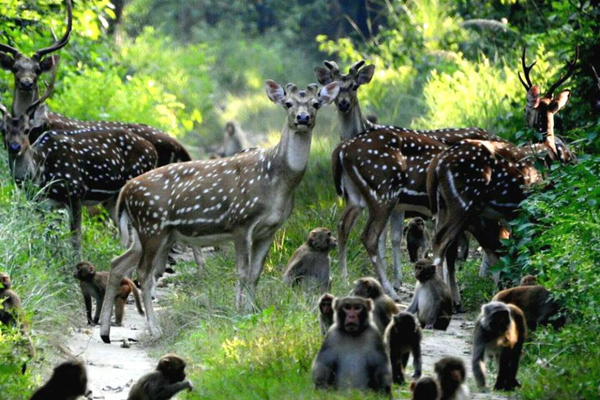
10. Periyar National Park, Kerala
Located near Thekaddy in Kerela, Periyar National Park is famous for its endangered flora and fauna. Nestled amidst two rivers Periyar and Pamba, this wildlife sanctuary habitats both tigers and elephants in plenty. Spread over an area of 925 sq. km, this park was declared as Periyar National Park in the year 1982. What makes this wildlife one of its kind is its location. While you have two rivers gushing in, it is also surrounded by the Cardamom Hills and Pandalam Hills of Western Ghats bordering Tamil Nadu. Along with 24 Royal Bengal tigers, Periyar also have few white tigers in the park that will leave you with some spellbinding experience. Periyar also houses variety of species of bird, some of which are rare and migratory.
